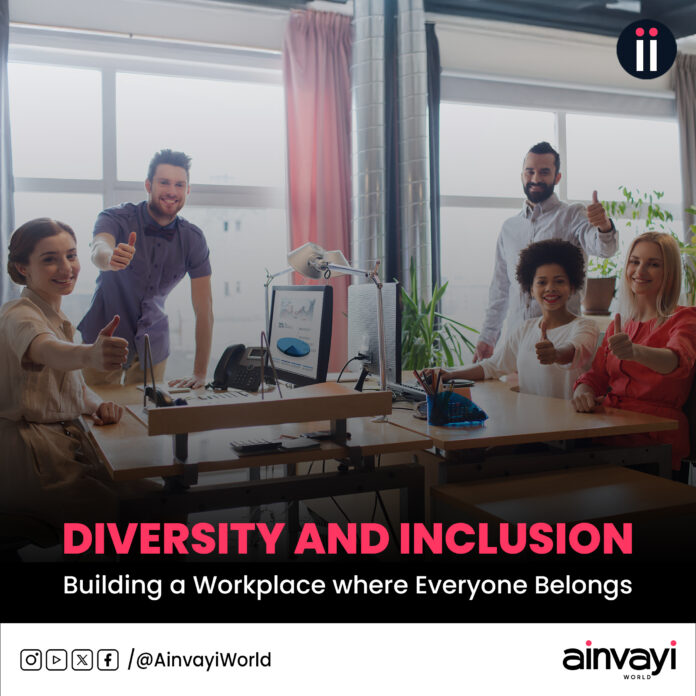Diversity and Inclusion (D&I) are not just buzzwords—they are essential for building a thriving, innovative, and engaged workplace. Creating an inclusive workplace culture ensures that every employee, regardless of background, feels valued and empowered. Let’s explore the significance of D&I and the best strategies to make it a reality.
Understanding Diversity and Inclusion
Let’s start with the definition of diversity and inclusion. Consider diversity to be your workforce’s unique, colorful, multi-hued palette. It encompasses several factors, including age, gender, race, disability and sexual orientation. Inclusion, on the other hand, is the secret element that guarantees that everyone feels appreciated, respected, and actively integrated into workplace dynamics. In essence, diversity is inviting everyone to the dance, and inclusion is making sure they all get to dance to their favorite tune.
Why Diversity and Inclusion Matter
Diverse teams bring varied perspectives, more empathy and creativity to the table, leading to enhanced problem-solving, greater innovation, and improved business performance. Companies that prioritize D&I see increased employee engagement, productivity and retention. Leading organizations like Google and Microsoft have demonstrated how inclusive cultures drive both business success and employee well-being. When variety is valued, everyone thrives—it’s a win-win!
Strategies for Creating an Inclusive Workplace Culture
To build a truly inclusive work culture, organizations must take intentional steps:
- Leadership Commitment: Inclusive workplaces start at the top. Leaders should champion D&I, setting the tone for the organization, through policies, decision-making, and everyday behavior.
- Education and Training: Implementing D&I training helps employees recognize and overcome unconscious biases, understand the significance of inclusive thinking, and help cultivate it. Interactive workshops and real-world scenarios make these programs effective and engaging.
- Inclusive Policies and Practices: Adopting equitable pay, flexible work arrangements, and zero-tolerance discrimination policies reinforce a culture of fairness and respect.
- Employee Resource Groups (ERGs): These are an excellent way to provide a sense of belonging, by offering employees from diverse backgrounds a safe space to interact, share experiences, and support one another.
- Mentorship and Sponsorship Programs: Structured mentoring and sponsorship initiatives help employees from diverse backgrounds advance in their careers by providing them guidance, advocacy, and development opportunities, in addition to building solid, long-lasting connections.
Overcoming Challenges in D&I Implementation
It’s not always easy to put D&I initiatives into practice. Here are a few tactics to get you going:
- Embracing the Change: Some employees may hesitate to embrace D&I. Address the apprehensions, and provide clear communication about the benefits of these initiatives. Involving all employees in the process can ease resistance.
- Overcoming the Biases: Biases are often unconscious and unintentional, but they have a significant impact on workplace decisions. It might be challenging to overcome them, however, continuous awareness and training programs can help employees recognize and mitigate these biases.
- Utilizing the Resources: Organizations may not always have the funds necessary to carry out D&I initiatives. Use your imagination to drive a meaningful change! Start small, leverage partnerships, and make use of available resources. Every action matters.
Measuring the Impact of D&I Initiatives
Here are some important metrics for companies to monitor the progress:
- Workforce Demographics – Assess diversity across different levels of the organization.
- Employee Engagement & Feedback – Conduct surveys to gauge inclusion, satisfaction and belonging.
- Retention & Promotion Rates – Identify disparities and ensure fair career growth opportunities.
- Impact Assessment – Regularly review policies and programs, modifying them based on data insights.
Remember to acknowledge and appreciate your accomplishments along the way! It keeps the momentum strong and reinforces a culture of continuous improvement.
Conclusion
Diversity and inclusion are business imperatives that benefit both employees and organizations. By creating an environment where every individual feels respected, valued, and empowered, organizations can create a truly thriving inclusive workplace that drives innovation, engagement, and long-term success.
Embrace diversity, champion inclusion, and watch your organization flourish.




